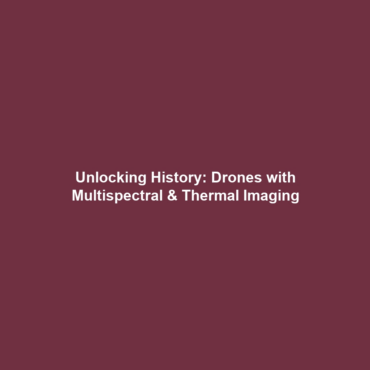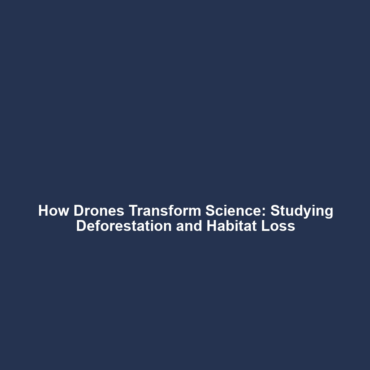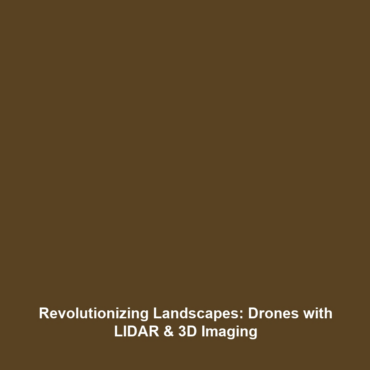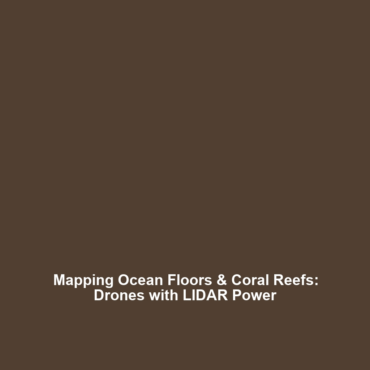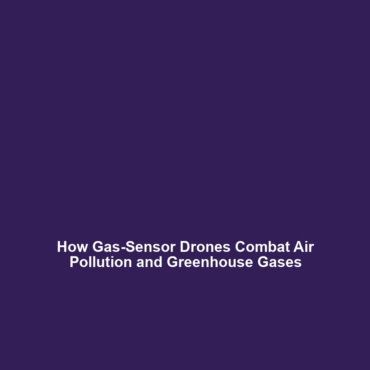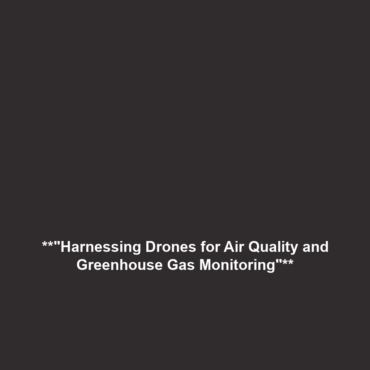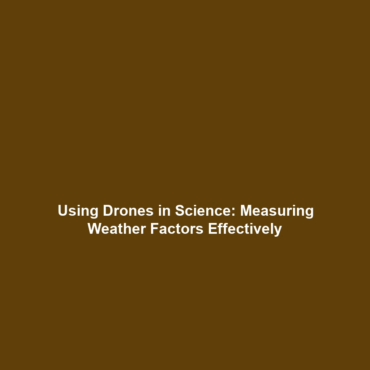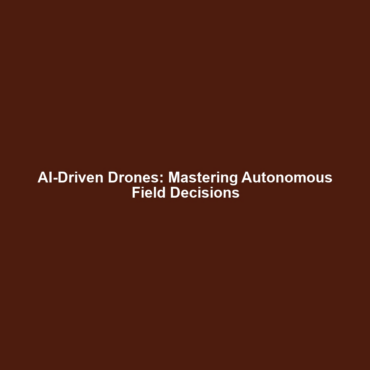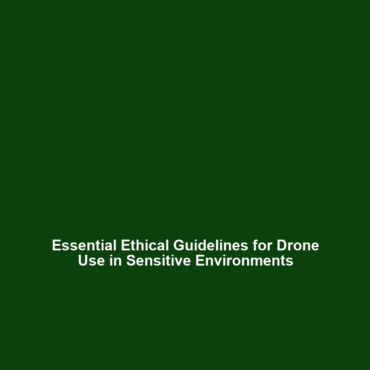<>
How Drones Use Multispectral and Thermal Imaging to Discover Hidden Archaeological Sites
Introduction
The integration of drones in science has revolutionized the field of archaeology, allowing researchers to uncover hidden archaeological sites with unprecedented efficiency. By employing multispectral and thermal imaging, drones can detect anomalies in the landscape that may indicate the presence of buried structures or artifacts. This innovative approach not only enhances discovery efficiency but also reduces the need for invasive excavation methods. Understanding how these technologies work together provides critical insights into their transformative potential in archaeology.
Key Concepts
Drones and Imaging Technologies
The operation of drones in archaeology hinges on the application of advanced imaging technologies:
- Multispectral Imaging: This technology captures data across multiple wavelengths, beyond visible light. It helps in identifying variations in vegetation health, soil composition, and moisture levels, which can lead to the detection of archaeological features.
- Thermal Imaging: Utilizing infrared sensors, thermal imaging detects heat emissions from the ground. This is particularly effective for identifying buried structures that differ in temperature from their surroundings, especially during cooler periods.
Applications and Real-World Uses
The practical applications of how drones use multispectral and thermal imaging to discover hidden archaeological sites are vast:
- Site Mapping: Drones can quickly survey large areas, mapping potential archaeological sites through thermal and multispectral data.
- Non-Intrusive Exploration: Researchers can assess potential dig sites without disturbing the ground, preserving the integrity of archaeological remains.
- Monitoring Changes: Ongoing monitoring of known sites allows archaeologists to detect changes over time, which could indicate looting or natural erosion.
Current Challenges
Despite their advantages, there are several challenges associated with how drones use multispectral and thermal imaging to discover hidden archaeological sites:
- Data Overload: The vast amount of data collected can be overwhelming and requires effective processing tools.
- Interpretation of Data: Distinguishing between natural anomalies and artificial structures can be complex and often subjective.
- Regulatory Restrictions: Drone usage is subject to strict regulations in many regions, limiting their deployment.
Future Research and Innovations
Future research in drones in science is likely to focus on enhancing imaging technologies and data analysis methods:
- Improved Sensors: Next-generation sensors will offer higher resolution and sensitivity, allowing for more precise detections.
- AI and Machine Learning: Implementing AI algorithms to automate data analysis and anomaly detection could significantly enhance operational efficiency.
- Increased Autonomous Capabilities: Future drones may incorporate autonomous flight and data collection, further reducing manual intervention.
Conclusion
Understanding how drones use multispectral and thermal imaging to discover hidden archaeological sites offers critical insights into the future of drones in science. This technology not only simplifies the archaeological process but also preserves valuable historical sites while expanding our understanding of the past. For more information on the intersection of technology and archaeology, consider exploring our articles on Archaeology and AI and The Future of Drones in Science.
